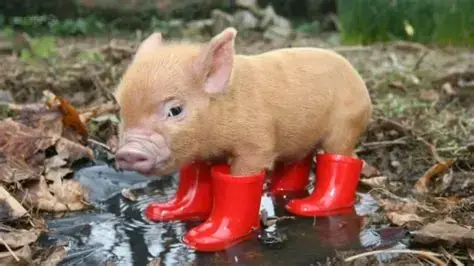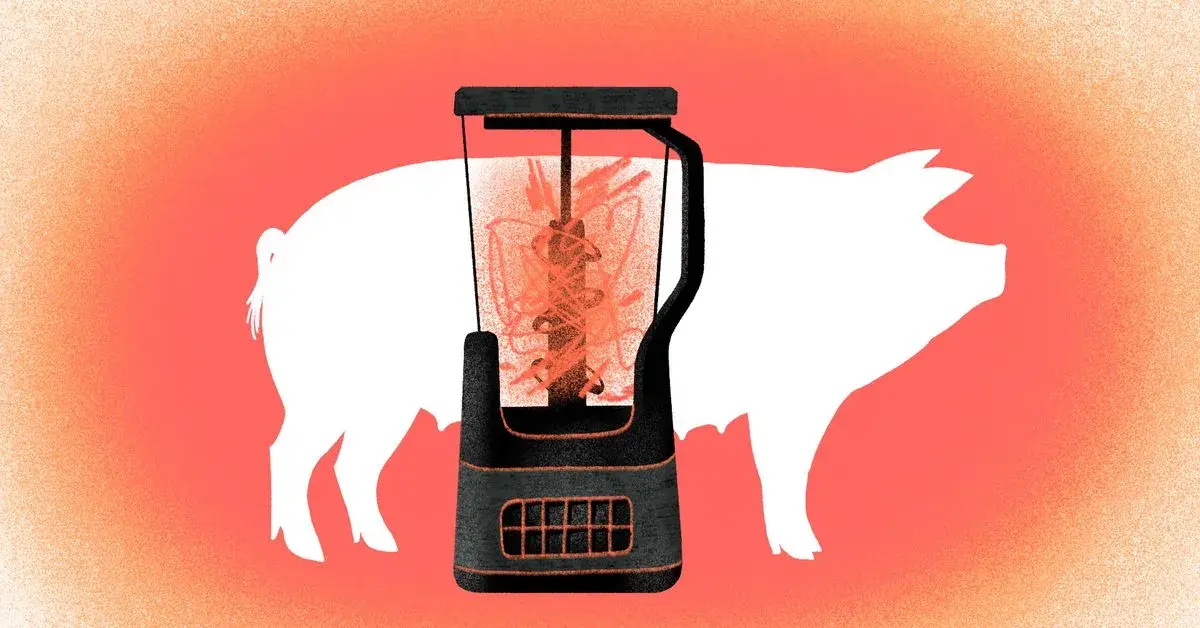- cross-posted to:
- todayilearned@lemmy.ml
- usa@lemmy.ml
- cross-posted to:
- todayilearned@lemmy.ml
- usa@lemmy.ml
cross-posted from: https://lemmy.ml/post/2879916
TL;DR for the title:
Employees [from this investigation] can be seen removing the intestines of dead, disease-infected piglets and mixing them with piglet feces in a blender — a mixture to be fed to the adult breeding pigs — causing one worker to gag.
The practice, called “feedback,” is common in the pork business (or “controlled oral exposure” in industry jargon).
The article itself goes into more depth about all the horrific things in the pork industry such as these
The pork industry has pushed pigs to their biological limits, leading to many bizarre practices beyond feedback, many of which are inhumane. To name one example recently in the news: There are horse farms that impregnate horses, extract their blood for a serum, abort their pregnancies, and then sell the serum to pig farms to induce puberty in young female pigs and produce larger litters. Holden Farms, like most pig breeding farms, confine pregnant pigs in gestation crates, cages so small they can’t turn around for practically their entire lives.

As a Brit who is old enough to remember the BSE (bovine spongiform encephalopathy/mad cow disease) epidemic, this is astonishingly reckless and dangerous. This is how you get prion diseases. And you don’t necessarily know you have a build-up of deformed prions until decades later.

I will never understand how people can treat other creatures like this.
And then still eat them.

Not just evil, it’s dangerous. This is how we get prions, like the one that caused Mad Cow Disease and subsequently tainted an entire generation of British people who can’t be proven not to be carriers, and forced an enormous cull of affected livestock.

It’s good that you won’t. Being able to understand this is probably a cognitohazard.

The real prions were the cognito hazards we fell into along the way

Isn’t this why mad cow disease was ever a real problem in the first place?
Yep feeding dead cows to cows is the main way that mad cow disease shows up (there is also sometimes atypical mad cow disease where it shows up randomly too)

Well, since MCD is caused by prions, which can occur spontaneously in any healthy animal, it makes sense.

Prions are an amazing thing, the Wikipedia has a whole rabbit hole about them.
They come from naturally occurring protein building blocks, which unlike most proteins, are “flexible”, so they can flex into different shapes to join with multiple different proteins.
Well, it turns out sometimes they flex in an unusual way, matching proteins they weren’t supposed to, forming a “prion” protein that causes more of the flexible ones join proteins they shouldn’t, in a cascading effect.
There is no predicting when this could happen, and no way of preventing it since the flexible building blocks are essential for the normal functioning of many proteins. They just have a certain possibility of catastrophic failure, and that’s it.

Yeah, they’re really cool!

The meat industry is unethical, water is wet, and the pope is a Catholic. More at 11.

Every time I’m tempted to eat bacon or pepperoni I make myself look at this picture…
 …and then I don’t.
…and then I don’t.
Animal cruelty and reading stuff like this hurts my soul deeply

Fuck sake.

Good lord. So glad my country has strict animal welfare standards for livestock. Uncomfortable that we still import and slaughter pigs from countries without those standards. (And yes, we import-and-slaughter because we don’t import pork itself. We do however, allow the import/export of live animals, so international trade buys our sheep for ‘breeding’, and sell us their pigs for ‘NZ-made pork’. I suppose it at least enforces abattoir health standards…?)

To drive down costs, the meat industry relies on practices that can increase the spread of disease, like overcrowding and intensive breeding, which can trigger the need for gruesome practices like feedback to work around the problems it’s created.
Americans eat more animals than practically any other country — around 264 pounds of red and white meat, 280 eggs, 667 pounds of dairy, and around 20.5 pounds of seafood per person each year.
Insane amounts, horrible -mostly unseen- reality to support them.

I’m extra glad now that I don’t eat pork.

